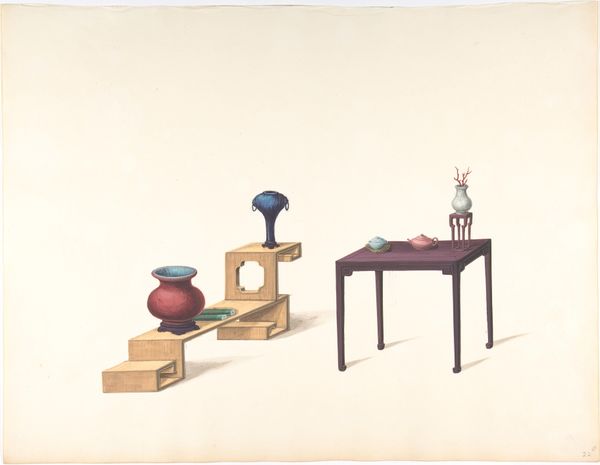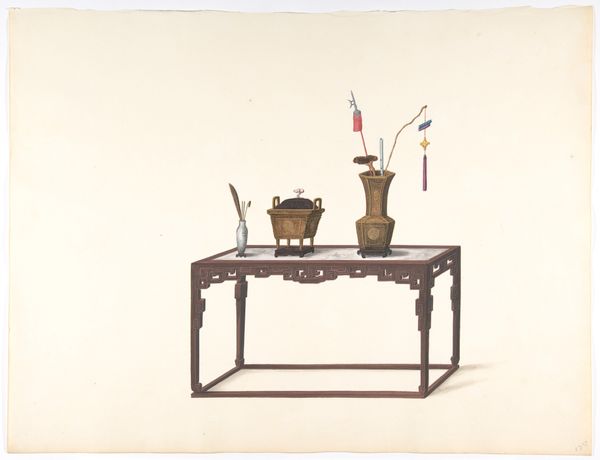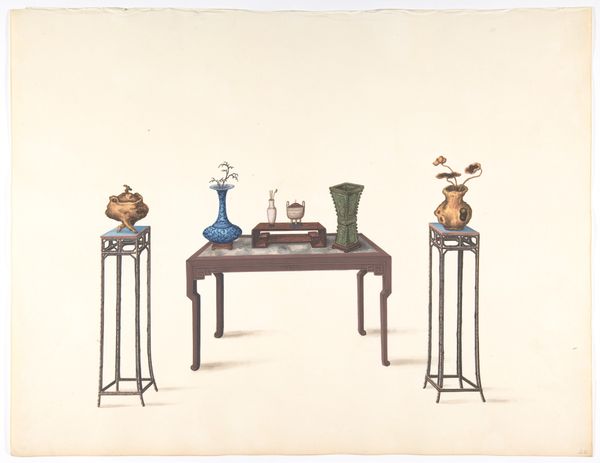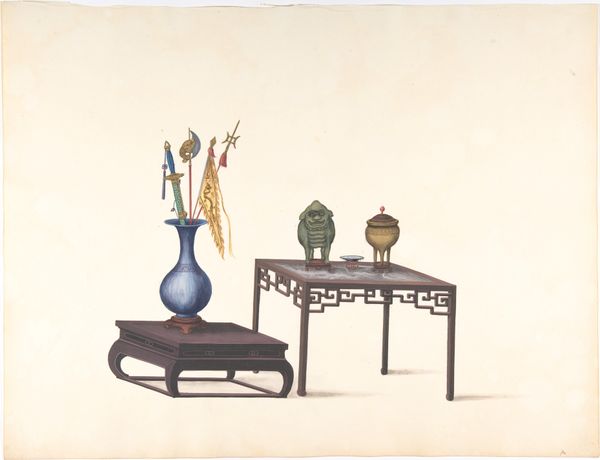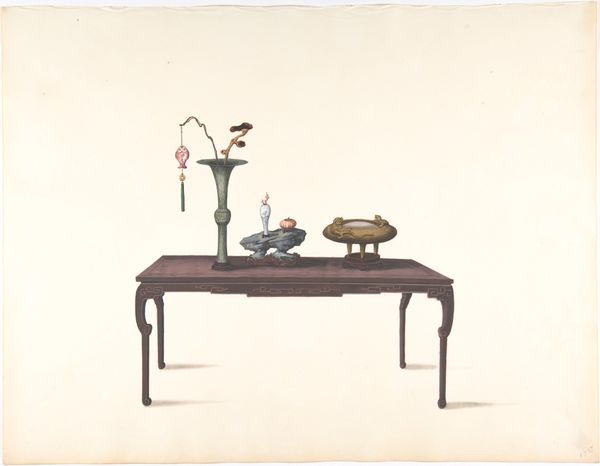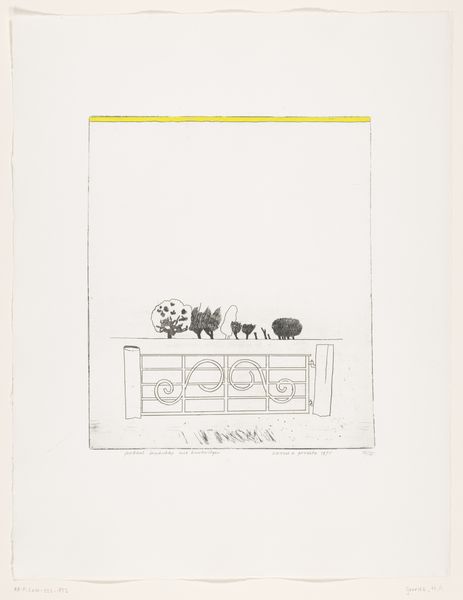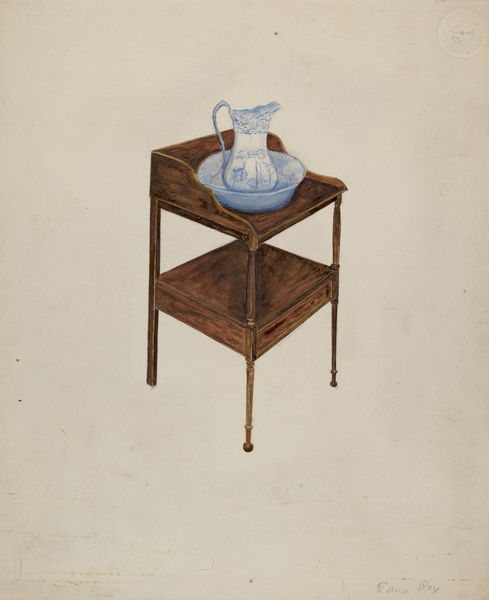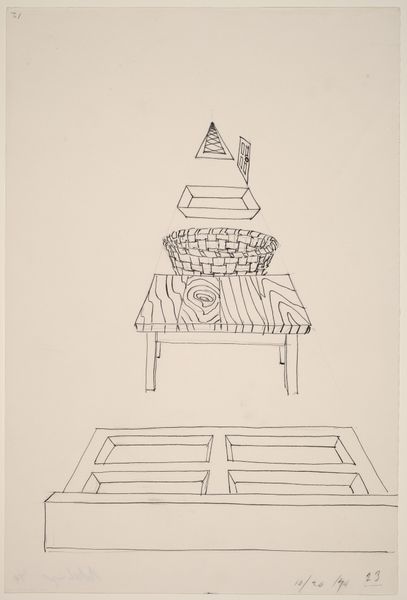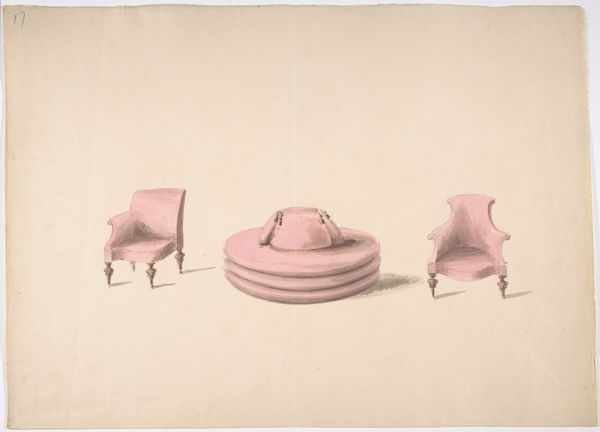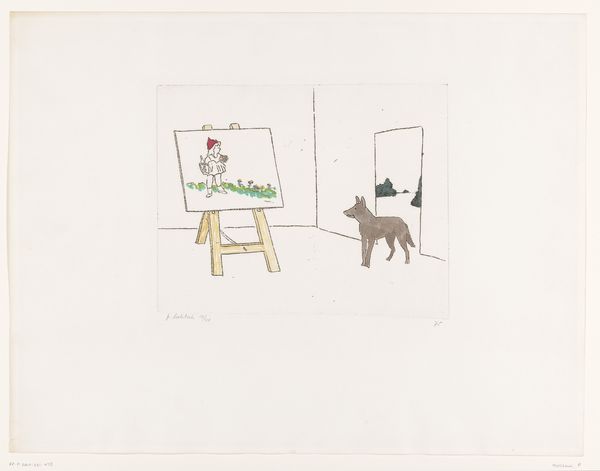
drawing, ceramic, watercolor
#
drawing
#
asian-art
#
ceramic
#
watercolor
#
orientalism
#
ceramic
#
watercolour bleed
#
watercolour illustration
Dimensions: Overall: 14 1/8 x 18 3/8 in. (35.9 x 46.7 cm)
Copyright: Public Domain
Curator: Take a moment to consider this artwork titled "Long, Low Purple Lacquer Table with Objects," likely created sometime between 1800 and 1900 by an anonymous artist. You can find this watercolor and ink drawing here at The Metropolitan Museum of Art. Editor: It's funny; it feels both ancient and modern at once. The composition is so spare, almost like a product shot for a design magazine. Yet the objects have this delicate, antique aura about them. There's a curious stillness, a kind of…arranged silence. Curator: That tension is very perceptive. This piece evokes a sense of idealized domesticity from the late Qing Dynasty period. Tables like this weren't just furniture. They were stages for carefully chosen objects reflecting the owner's taste and education. Each piece, from the ceramics to perhaps bronzes we see rendered, carried symbolic meaning. Editor: You can almost hear the faint sound of scholarly debate, can't you? The way those objects are positioned feels almost ritualistic. It's as though each is placed in the precise spot dictated by an invisible ceremony, some intricate form of daily contemplation. Do you think this could also have had influence of the Japonisme? Curator: Certainly. One could view this is within the context of what's come to be known as "Orientalism" – how Western artists depicted East Asian subjects, not always accurately but reflecting their own fascinations. Watercolor, such as what's on display here, would have also been easier to transport, enabling cultural exchange on a scale we hadn't seen before. Editor: Absolutely. There's this pervasive idea that, no matter the subject matter or time, when an artist puts something down on paper or canvas or whatever they're using, they're putting a part of themselves down. But this… the painting is almost a part of these imagined residents of the dwellings that owned those things. Does that make sense? Curator: It resonates, indeed. The way these objects were arranged reveals, not just taste, but aspirations. Editor: That makes sense! Ultimately, what stands out to me now is how much intention it would have taken to arrange it. Curator: For me, I think it showcases that in a static object, like furniture, there is indeed the chance to not just make it functional, but embed social identity in it.
Comments
No comments
Be the first to comment and join the conversation on the ultimate creative platform.

